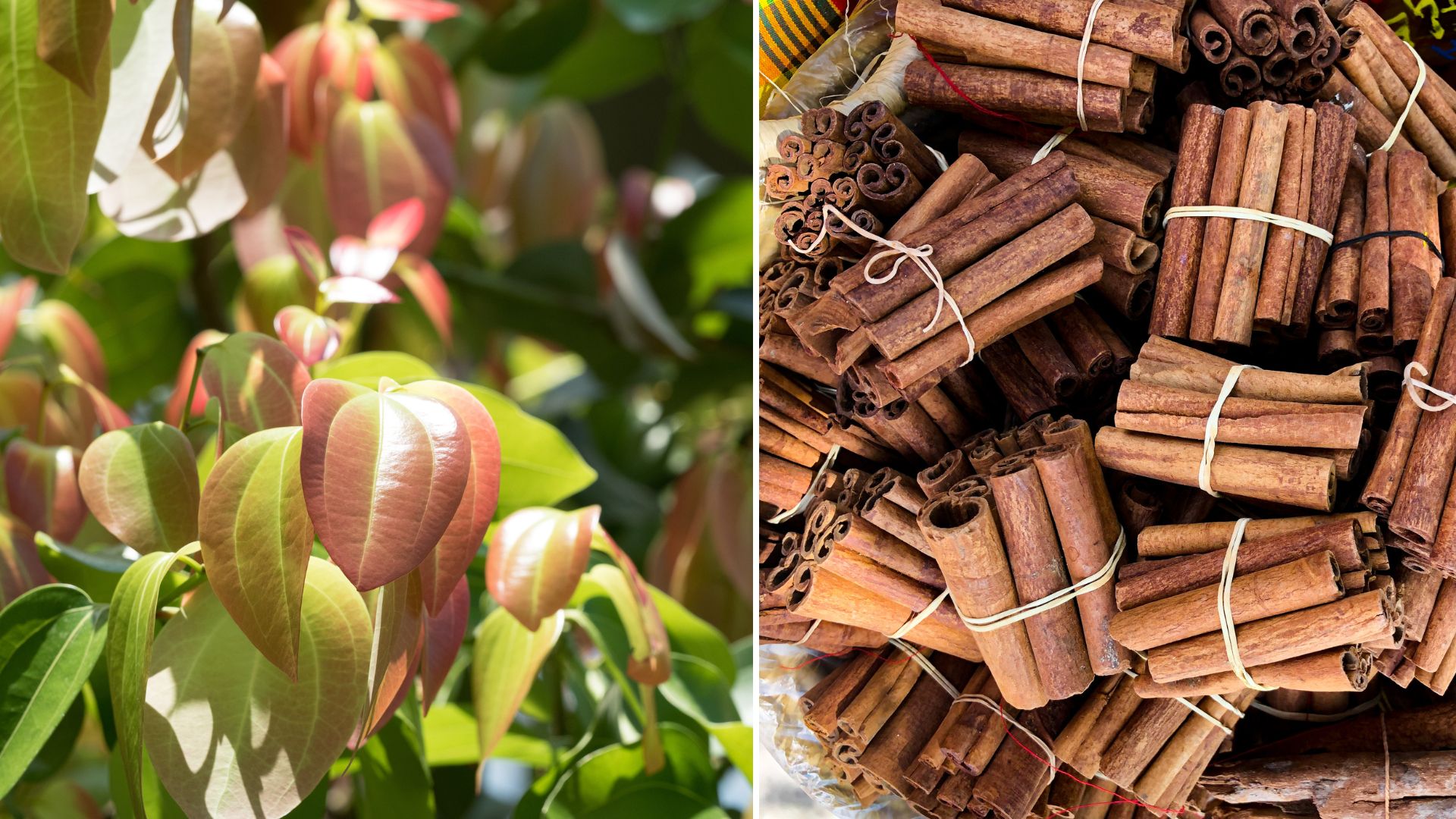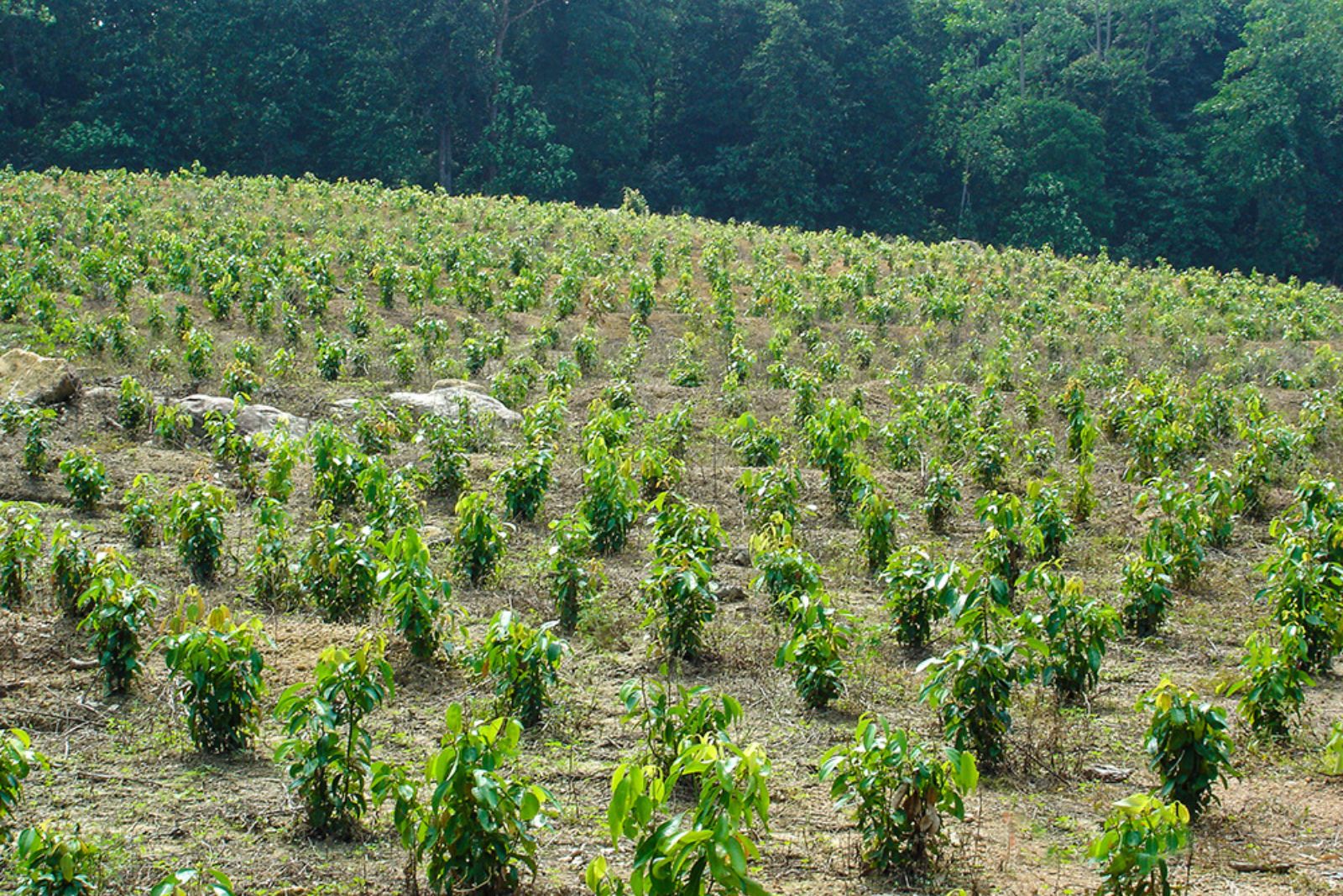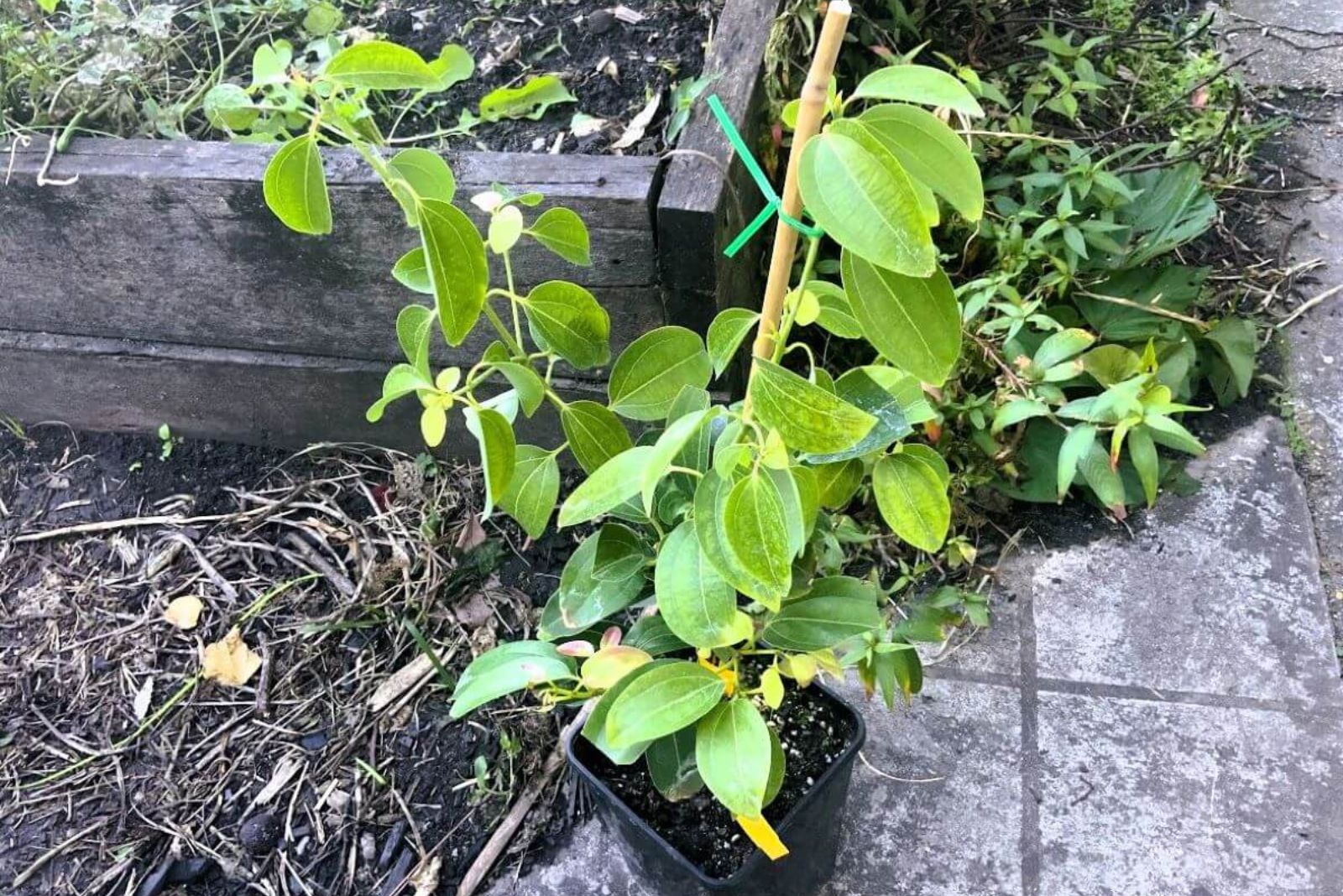Growing your own spices has become quite popular these days, and we are going to show you how to grow cinnamon in your garden!
Just imagine stepping into the garden and being greeted by the sweet and spicy fragrance of freshly grown cinnamon, Plus, the cinnamon plant is quite pretty and will definitely spruce up your space!
In this article, we are going to discuss each step of the growing process, from selecting the right cinnamon variety to providing it with the best growing conditions.
Let’s get started!
Tips For Planting Cinnamon
Cinnamon originates from tropical regions and is used to growing in warmer climates. So, if you live in a similar climate, you can grow your cinnamon outside. USDA hardiness zones 10-12 are the best for growing cinnamon.
For starters, you can get young nursery plants instead of sowing the seeds. Look for well-developed root systems and disease-free leaves when buying the plant.
Cinnamon plants grow best in sunny locations where they have enough room to grow and spread. Allow enough space between cinnamon plants, as they can grow into small trees.
Plant them at least 10 to 15 feet apart and make sure to dig a hole that is twice the size of the plant’s root ball. Make sure that the soil is well-draining and fertile. Fill the empty spaces with soil and gently press down to get rid of air pockets. Then, water the plants thoroughly.
Also read: Discover How A Sprinkle Of Cinnamon Can Make Your Garden Thrive
Grow Cinnamon From Seeds
Here’s a guide if you want to grow cinnamon from seeds. Get yourself some high-quality cinnamon seeds and plant them about an inch deep in pots filled with a sterile seed-starting mix.
Make sure to keep the soil evenly moist and warm – 75 degrees Fahrenheit is the optimal temperature. After three weeks, the seeds should germinate.
Popular Cinnamon Varieties
If you don’t know what cinnamon variety to grow, here are some popular ones that are commonly grown:
• Cinnamomum loureirii – otherwise known as Vietnamese or Saigon cinnamon. It has a prominent aroma and strong flavor, making it a popular choice for savory and sweet dishes.
• Cinnamomum burmannii – widely used in commercial spice blends and as a flavoring agent.
• Cinnamomum cassia – also called Chinese cassia. It has a strong and spicy flavor, and is one of the most popular varieties sold in North America.
• Cinnamomum verum – also known as “true cinnamon”. It has a delicate, sweet flavor and is commonly used in culinary dishes and desserts.
Cinnamon Plant Care
Cinnamon plants are relatively easy to grow. All you have to do is grow it in plenty of sunshine and give it enough water. Nonetheless, we are going to talk about the plant in more detail, so stay tuned!
Water Requirements
Let’s start with the watering first. Cinnamon plants prefer consistent and moderate watering. Keep the soil moist by watering when the top two inches of the soil have dried out.
You can also apply a layer of mulch to help with moisture retention and keep the roots cool. Reduce watering slightly during the dormant period.
Soil Requirements
We have already mentioned that these plants require well-draining soil for proper growth. You can use sandy-loam soil with good aeration. Also amend the soil with compost or add fertilizers to improve the nutrient content.
The soil should be slightly acidic to neutral with pH levels ranging from 5.5 to 7.5. If you have poor soil in your garden, consider container gardening.
Temperature & Humidity
Since they originate from tropical regions, these plants are also adapted to relatively high humidity and temperature. Temperatures between 60 and 90 degrees Fahrenheit are ideal for their growth.
These plants are not frost tolerant so don’t plant them outdoors if you live in colder climates. Make sure to keep the humidity levels between 60% to 80%.
Also read: Do Pebble Trays Work For Humidity? All The Answers
Light Requirements
Cinnamon plants thrive in full sun to partial shade conditions. They require at least 6 to 8 hours of sunlight during the day. You should still protect the plants from the scorching sun during hot summer days.
Fertilizer Requirements
You can use balanced fertilizers with equal amounts of phosphorus, nitrogen, and potassium for your cinnamon plant. You can use the slow-release kind before planting, which will nourish the plant by slowly releasing nutrients into the soil.
Propagation
Cinnamon plants can be easily propagated with stem cuttings. All you have to do is cut a six inch long stem and remove the bottom leaves. Then, put the cutting in adequate soil that is moist.
Keep it in a sunny location and make sure that it’s warm enough. After several months, the cuttings will develop roots and the young plant can be transplanted outdoors.
Pruning
Although they don’t require regular pruning, you should still do it from time to time to keep them nice and clean. Remove dead, diseased, or damaged branches to prevent spreading the disease and improve overall health of your plant.
Pests & Diseases
Even though cinnamon is a hardy plant, it is still susceptible to pests and plant diseases. The most common pests are aphids, mealybugs, and scale insects. Use natural remedies or appropriate pesticides to manage pest issues.
Fungal diseases can also appear if you keep your plant in soggy soil. If you notice any spots or sudden drooping, check for fungal diseases. Use neem oil or copper fungicide to treat them.
Harvesting Tips
Cinnamon is usually harvested two to three years after planting. After that, cinnamon is harvested every two years.
What you can do is cut off branches or cut the entire tree at the trunk. The edible section of the plant emerges when the outer bark is removed to reveal the yellowish-orange layer beneath.
With a sharp knife or paint scraper, cut off the cinnamon layer in strips as you reach the lighter center. These pieces should be left to dry for a week or so. Once they are dry, they will curl into the typical cinnamon stick shape.
Now, you can either grind them or keep the sticks. Your cinnamon should last for a few years if you keep it in a sealed container in a cold, dry location.
Tips For Growing Cinnamon In Pots
If you live in a colder region, it’s best to stick to container gardening indoors. Even though they don’t reach their full size when grown in pots, you can still harvest some cinnamon after a couple of years.
So, what you should do is start with a larger pot that is about 18 inches wide and 20 inches deep – remember, cinnamon plants need a lot of space to grow and develop.
Make sure that your container has drainage holes in the bottom so that the water can easily drain out. Fill it with well-draining soil and water the plant once the top few inches of the soil are dry.
You can bring the plant outside during summer so that it can grow in full sun exposure. The perfect location indoors would be a south-facing window. Don’t forget to fertilize the soil and mist the plant.




